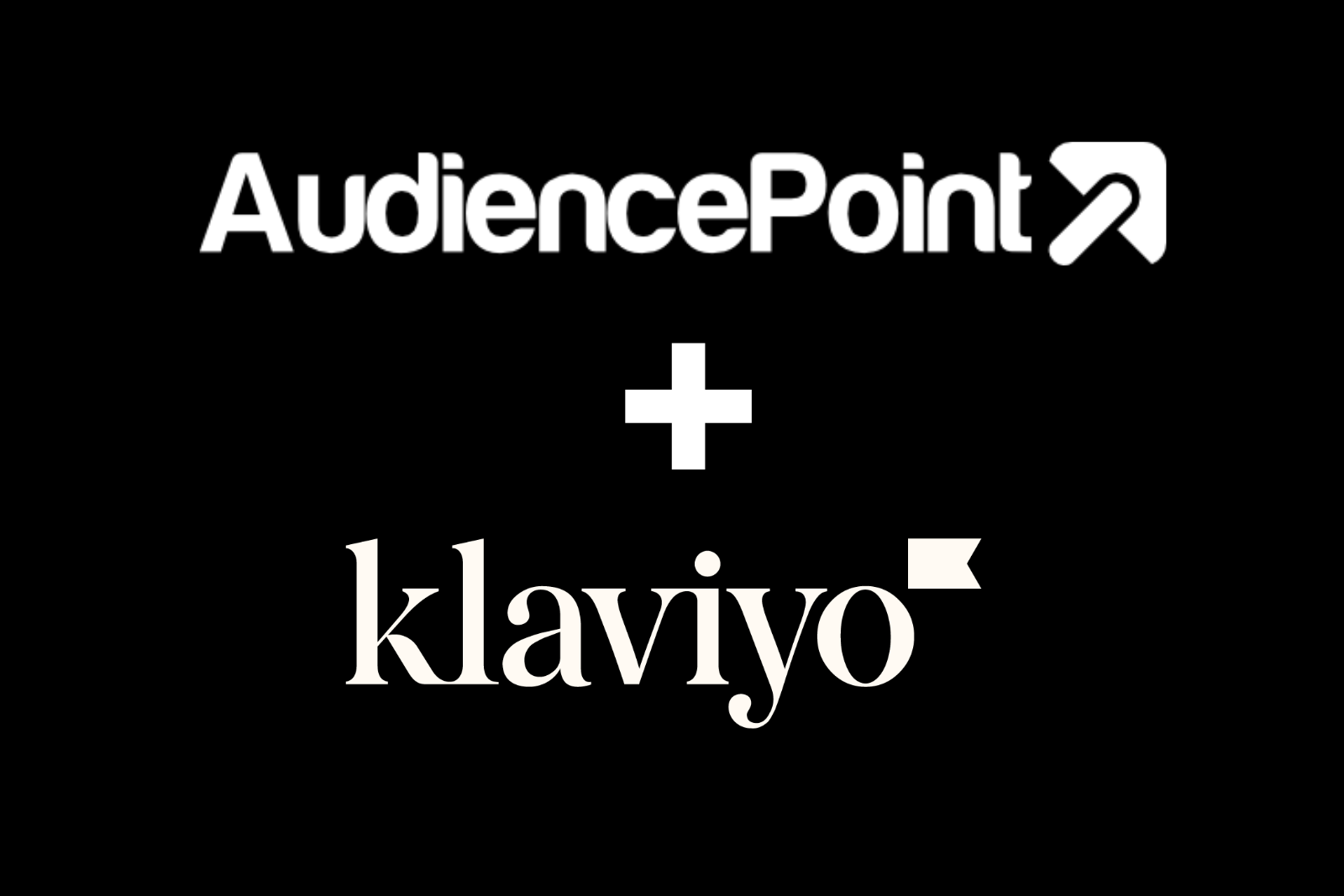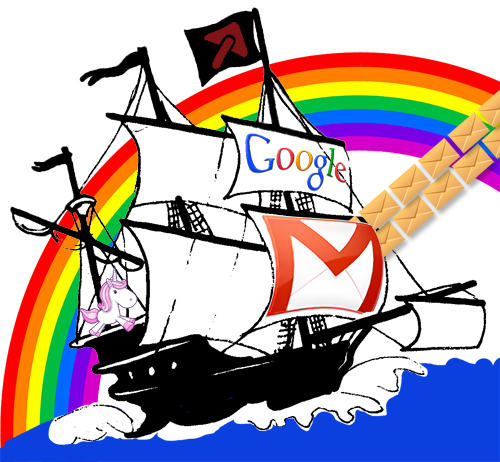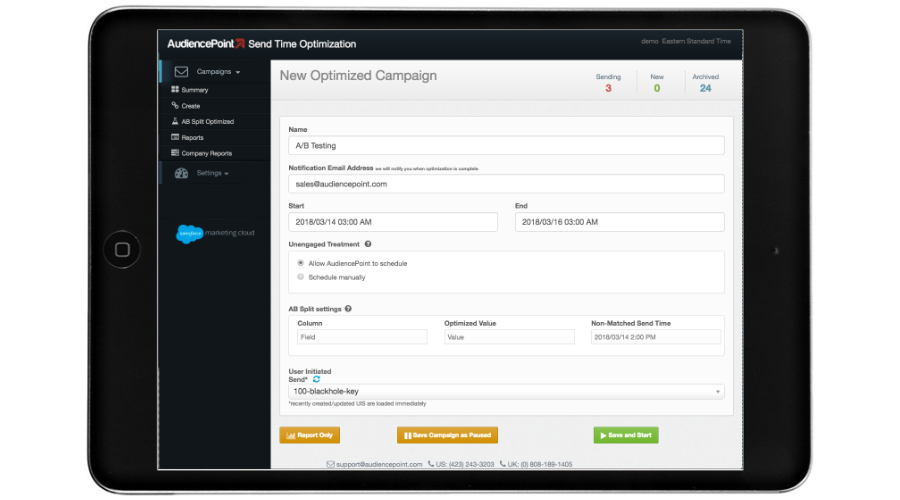AudiencePoint is thrilled to announce our new integration with Klaviyo! AudiencePoint is looking for partners to pilot our...
What Is AI-Driven Segmentation In Email Marketing?
AI-driven segmentation in email marketing is the process of leveraging AI in Email Marketing to automatically group subscribers based on data-driven insights, enabling hyper-targeted messaging and tailored experiences at enterprise scale. This represents a significant evolution from static lists and basic demographic targeting, as AI in email marketing continuously learns from large data sets—such as engagement, purchase behavior, demographics, and even inbox placement signals—to create actionable segments that drive revenue and nurture customer relationships.
What Is Segmentation, And How Has It Evolved?
Email segmentation began as a manual process: marketers divided audiences into simple groups (like geography or gender) using spreadsheet filters or basic automation rules. The limitations of this approach were clear—static lists became outdated quickly and couldn’t adapt to real-time changes in subscriber behavior, resulting in missed opportunities and stale communication. Today, AI email marketing generators have transformed segmentation through automation, predictive analytics, and ongoing optimization. Instead of working with labor-intensive and rigid criteria, marketers can now let AI find patterns across millions of data points, dynamically updating segments for maximum relevance and impact.
How Does AI Analyze Subscriber Data For Intelligent Segmentation?
AI in email marketing ingests data from multiple sources—including opens, clicks, device type, purchase history, send timing, and even signals like inbox placement—to identify granular audience segments you may never discover manually. By combining supervised learning (using historical campaign results) and unsupervised clustering (grouping subscribers based on similar characteristics), AI-driven segmentation helps marketers automatically identify and prioritize high-value audiences, disengaged contacts, and emerging trends. This not only enables real-time list management but also lays the groundwork for powerful personalization and lifecycle marketing programs.
What Are The Benefits Of AI-Driven Segmentation?
The benefits of deploying an AI email marketing generator for segmentation are undeniable for enterprise email marketers. First, it dramatically improves targeting accuracy by ensuring the right message matches the right audience, based on up-to-the-moment behavior signals. Second, it creates operational efficiency, eliminating manual workload while scaling to millions of subscribers effortlessly. Most importantly, intelligent segmentation lifts key outcomes: higher open rates, increased click-through, stronger sales, and healthier sender reputation, all of which directly impact ROI.
Examples Of AI-Driven Segments: Beyond The Basics
AI segmentation goes far beyond age, gender, or region. Examples include behavioral segments (active vs. lapsed customers, buyers of a specific product, frequent browsers), lifecycle stages (new subscriber, repeat purchaser, dormant lead), engagement tiers (those likely to convert this week, or those at risk for churn), and even hybrid groupings (e.g., high-value customers opening but not clicking, requiring a unique re-engagement strategy). The true power of AI in email marketing lies in its ability to unify and act on these complex signals rapidly, delivering micro-targeted campaigns that far outperform static segmentation methods.
How Does AI Personalization Improve Email Marketing?
AI personalization fundamentally elevates email marketing performance by enabling marketers to create hyper-relevant and timely messages at scale, resulting in higher engagement, improved user experience, and increased revenue. Rather than relying on basic demographic factors or manual list splitting, AI in email marketing digs into subscribers’ behaviors, preferences, and engagement signals to serve each individual the content they are most likely to act on. This data-driven approach empowers marketing teams to achieve results that generic or rule-based personalization simply cannot deliver.
The Shift To Hyper-Personalized Content
Email marketing has evolved from sending broad, one-size-fits-all campaigns to leveraging AI email marketing design for intelligent, hyper-personalized content creation. AI analyzes massive amounts of data—such as browsing patterns, past purchases, and interaction histories—to identify what resonates with each subscriber. This level of granularity means messages are no longer just “personalized” by first name, but dynamically adjusted with content, products, or offers that reflect the individual’s unique journey and intent. The result: subscribers feel valued and understood, not just targeted.
How Does AI Personalize Subject Lines And Send Times?
AI-powered algorithms excel at optimizing two of the most critical drivers of email engagement: subject lines and send times. By analyzing historical data from millions of email interactions, AI can identify the keywords, tone, and phrasing that prompt opens for different segments or individual recipients. Simultaneously, AI systems learn when each user is most likely to engage with their inbox, predicting the perfect delivery moment to maximize visibility. Marketers leveraging these AI-driven insights routinely see uplift in open rates as their messages reach subscribers with compelling topics exactly when attention is highest.
AI-Powered Dynamic Content And Product Recommendations
Advanced personalization doesn’t stop at message timing and subject lines. Dynamic content engines powered by AI populate emails with real-time, personalized recommendations—from products and educational resources to event invitations—tailored to each recipient’s interests and needs. This goes beyond traditional rule-based logic, allowing marketers to tap into machine learning models that adjust recommendations with every new data point. As a result, every send becomes an opportunity for cross-sell, upsell, or re-engagement, tailored precisely to each subscriber’s lifecycle stage.
The Measurable Impact On Engagement And Revenue
The impact of deploying AI in email marketing for personalization is both immediate and measurable. Enterprise brands leveraging AI-driven personalization report dramatic increases in open rates, click-through rates, and ultimately, conversions. With AudiencePoint, for example, marketers gain not only segmentation and timing insights but also real-time feedback on what content and recommendations drive meaningful subscriber action—all while optimizing inbox placement for maximum visibility. In a competitive landscape where every interaction counts, investing in advanced personalization is now table stakes, not a luxury.
If your enterprise is ready to grow engagement and revenue from every mailing, it’s time to explore—and fully leverage—the transformative benefits of AI personalization in your email marketing program.
What Are The Best Free AI Tools For Email Marketing?
The landscape of AI email marketing tools has rapidly expanded, offering enterprise marketers a spectrum of powerful free and freemium options. The best free AI tools for email marketing feature advanced automation, intelligent segmentation, personalized content generation, and robust analytics capabilities that empower marketers to transcend manual processes and deliver data-driven results at scale. Choosing from the plethora of available solutions requires clear alignment with your business objectives and a keen understanding of the unique features and limitations each platform provides.
How To Select The Right AI Tool Based On Business Goals?
To maximize ROI, enterprise email marketers must first articulate their strategic goals: increased engagement, heightened personalization, greater automation, or improved deliverability. The right AI email marketing generator should integrate seamlessly with your existing tech stack, support sophisticated AI-powered email marketing tactics, and provide meaningful analytics for optimization and reporting. Evaluate whether a tool enables advanced workflows, handles large datasets typical in enterprise environments, and complies with security standards essential for client trust and regulatory adherence.
Key Features: Segmentation, Personalization, And Design Automation
Top free AI tools distinguish themselves by offering automated email segmentation, dynamic content generation, predictive analytics, and intuitive drag-and-drop design interfaces enhanced by artificial intelligence. Look for features like behavior-based audience splits, AI-generated recommendations for subject lines and send times, and real-time content adaptation based on user interactions. For enterprise users, consider whether the tool supports granular permission controls, multi-user access, and scalable reporting dashboards.
Real-World Use Cases And Benefits
Many organizations use free AI tools like Mailchimp’s AI Content Optimizer, HubSpot’s AI-powered email personalization, or Zoho Campaigns’ smart subject line suggestions to drive measurable improvements without substantial upfront investment. For instance, an e-commerce brand might leverage AI segmentation to identify high-value buyers, while a B2B SaaS company could use AI-driven send time optimization to boost response during key business hours. The result is not just time savings, but also significant improvements in open rates, click-throughs, and downstream conversions.
AudiencePoint provides deep insights and proprietary intelligence for marketers ready to move beyond basic automation. By combining actionable segmentation with accurate inbox placement measurement, AudiencePoint fills the gap left by generic free tools—delivering true enterprise-grade value for those intent on maximizing every campaign’s success.
Why Should Marketers Focus On Inbox Placement, Not Just Deliverability?
Inbox placement has emerged as a critical metric for enterprise email marketers—a focus even more important than traditional email deliverability. While deliverability tells you if your message reached a mailbox, it doesn’t reveal the full story; it omits whether your message was buried in ‘spam’ or featured front-and-center in the primary inbox. For brands aiming to drive meaningful engagement and maximize ROI, mastering inbox placement is now the strategic differentiator that separates best-in-class programs from the rest.
What Is The Difference Between Deliverability And Inbox Placement?
Email deliverability tracks which messages avoid bounces or technical issues, registering a delivery to the mailbox provider. However, this metric is blind to where the email lands post-delivery. Inbox placement steps further, measuring the crucial moment when your email lands directly in the coveted primary inbox, or is relegated to the spam folder or a secondary tab. In effect, an email ‘delivered’ but hidden in spam offers no real marketing value, yet traditional deliverability metrics would consider it a success. Only by tracking inbox placement can marketers see the true impact of their strategy and intervene before engagement drops or sender reputation is irreparably damaged.
How Do AI Tools Redefine Inbox Placement Monitoring?
Historically, inbox placement monitoring relied on seedlists or panel data, which yielded only partial, often unreliable insights due to small sample sizes or biased user behaviors. Modern AI email marketing generators and advanced analytics now empower platforms like AudiencePoint to monitor millions of real subscriber inboxes. By using AI to synthesize signals such as open rates, clicks, bounces, and even ongoing engagement patterns, these tools reveal exactly which segments of your list are receiving emails in their main inbox, and which are missing out due to spam filtering or inactive addresses. Real-time insights allow for agile adjustments, more precise segmentation, and the opportunity to suppress or re-engage risky addresses before they harm your reputation.
Why Does Inbox Placement Matter For Campaign Performance?
The difference between strong and poor inbox placement directly maps to campaign outcomes—high placement correlates to elevated open rates, click-throughs, and conversions, while poor placement can snowball, triggering further spam filtering and long-term engagement losses. Even with a 99% deliverability rate, if half your emails land in spam, your true audience shrinks dramatically. Savvy marketers who focus on inbox placement, not just technical deliverability, future-proof their programs by continuously measuring and optimizing for true visibility—and by building a relationship of trust with their subscribers and ISPs alike.
How Does AudiencePoint Improve Inbox Placement And Segmentation?
AudiencePoint’s AI-driven platform revolutionizes inbox placement measurement and improvement. Unlike other solutions limited to guesswork with seedlists, AudiencePoint assesses actual subscriber engagement, comparing your campaigns to a vast, real-world benchmark of over 85 trillion email events. Not only does it pinpoint which subscribers see your messages in the inbox, but it also highlights risky segments at risk of spam filtering. Marketers can then act decisively, suppressing problematic addresses, refining personalization, and optimizing engagement strategies. The result is not just more emails delivered, but more emails seen, engaged with, and acted upon, delivering measurable business value at every campaign.
Unlock the next level of email marketing success with AudiencePoint. Move beyond generic deliverability stats and gain rich, actionable inbox placement insights drawn from the world’s largest independent email activity dataset. Our platform doesn’t simply track—AudiencePoint empowers your team with AI-driven recommendations to maximize actual subscriber engagement, optimize segmentation, and accelerate campaign performance. Join the leading brands that trust AudiencePoint to put their emails in front of real people, not just mail servers. Book your custom demo today, and experience how true inbox visibility can transform your ROI—and your sender reputation—forever.





